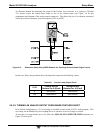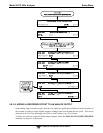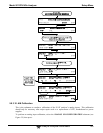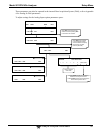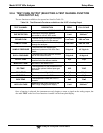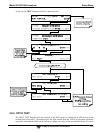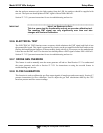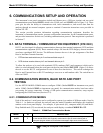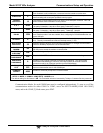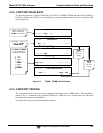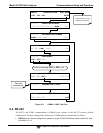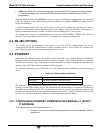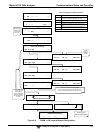
Model 9110TH NOx Analyzer Communications Setup and Operation
Teledyne Analytical Instruments 135
6. COMMUNICATIONS SETUP AND OPERATION
This instrument’s rear panel connections include an Ethernet port, a USB port (option) and two serial
communications ports labeled RS232, which is the COM1 port, and COM2 (refer to Figure 3-4). These
ports give the user the ability to communicate with, issue commands to, and receive data from the
analyzer through an external computer system or terminal. Connection instructions were provided in
Section 3.3.1.8.
This section provides pertinent information regarding communication equipment, describes the
instrument’s communications modes, presents configuration instructions for the communications ports,
and provides instructions for their use, including communications protocol. Data acquisition is presented
in Section 7.
6.1. DATA TERMINAL / COMMUNICATION EQUIPMENT (DTE DEC)
RS-232 was developed for allowing communications between data terminal equipment (DTE) and data
communication equipment (DCE). Basic terminals always fall into the DTE category whereas modems
are always considered DCE devices. The difference between the two is the pin assignment of the Data
Receive and Data Transmit functions.
DTE devices receive data on pin 2 and transmit data on pin 3.
DCE devices receive data on pin 3 and transmit data on pin 2.
To allow the analyzer to be used with terminals (DTE), modems (DCE) and computers (which can be
either), a switch mounted below the serial ports on the rear panel labeled DCE DTE (Figure 3-4) allows
the user to set the RS-232 configuration for one of these two data devices. This switch exchanges the
Receive and Transmit lines on RS-232 emulating a cross-over or null-modem cable. The switch has no
effect on COM2.
6.2. COMMUNICATION MODES, BAUD RATE AND PORT
TESTING
Use the SETUP>MORE>COMM menu to configure COM1 (labeled RS232 on instrument rear panel)
and/or COM2 (labeled COM2 on instrument rear panel) for communication modes, baud rate and/or
port testing for correct connection. If using a USB option communication connection, setup requires
configuring the COM2 baud rate (Section 6.2.2).
6.2.1. COMMUNICATION MODES
Each of the analyzer’s serial ports can be configured to operate in a number of different modes, listed in
Table 6-1. As modes are selected, the analyzer sums the mode ID numbers and displays this combined
number on the front panel display. For example, if quiet mode (01), computer mode (02) and Multi-
Drop-Enabled mode (32) are selected, the analyzer would display a combined MODE ID of 35.
Table 6-1: COMM Port Communication Modes
MODE
1
ID DESCRIPTION
QUIET
1
Quiet mode suppresses any feedback from the analyzer (such as warning messages)
to the remote device and is typically used when the port is communicating with a
computer program where such intermittent messages might cause communication



